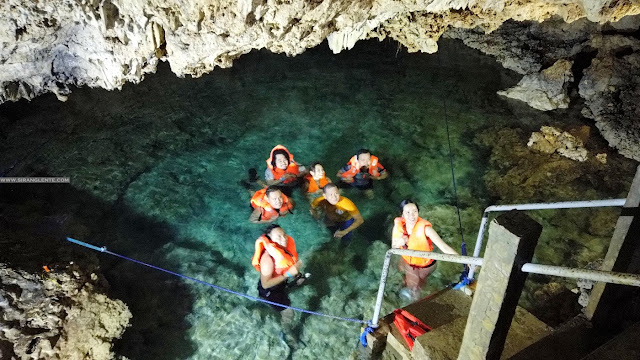
Friday, 19 February 2021
Enchanted Cave, Bolinao

Patar Beach, Pangasinan

Jump to: About Patar Beach | How to Get There | What to Expect | Suggested Itinerary | Travel Budget | Where to Stay | Travel Tips
About Patar Beach
Patar Beach is the crown jewel of Bolinao, Pangasinan. Known for its golden-white sand, crystal-clear waters, and breathtaking sunsets, this public beach offers an unspoiled escape from the usual crowded resorts. Backed by dramatic limestone cliffs and coconut-lined shores, it's perfect for backpackers, barkadas, and families seeking affordable paradise by the sea.
Bolinao Falls 3
Bolinao Falls 3 must be included in your list to visit in Pangasinan. Its pool perimeter is longer and wider than the other falls in the area, so it is perfect for photo ops. Though passing the rough road was a bit challenging, you will be rewarded with a wide open area surrounded by greens, landscaped with cottages. The breeze is fresh and cool. Such an Instagram-worthy place! By the way, it is a few minutes' travel from the Falls 1. Entrance fees are being collected. CLICK TO WATCH MY PANGASINAN VLOG
Bolinao Falls 1

Wednesday, 17 February 2021
Pangasinan – Tourist Spots, Travel Guide, Itinerary, & Hotels

About
Pangasinan is a coastal province in Northern Luzon known for its rich culture, historical towns, beautiful beaches, waterfalls, and the iconic Hundred Islands National Park. It's a popular destination for island hopping, food trips, and cultural exploration, just a few hours from Metro Manila.
Sunday, 14 February 2021
Quezon Memorial Circle and Shrine

Others find Quezon Memorial Circle as their perfect place for jogging, meeting someone, or other activities, and the perfect spot for Pokemon Go gamers as their lure location, but for me – this landmark commemorates the significance of the late President Manuel L. Quezon and the Commonwealth of the Philippines. I have visited this park several times, but it’s my second time entering the museum.
Mt. Pulag Hiking Guide – Sea of Clouds, Trails, Itinerary, and Budget

Jump to: About Mt. Pulag | How to Get There | Climbing Trails | Sample Itinerary | Budget and Expenses | Where to Stay | Travel Tips
About Mt. Pulag
Mt. Pulag, standing at 2,926 MASL, is the third-highest mountain in the Philippines and the highest in Luzon. Famous for its sea of clouds, sunrise views, and dwarf bamboo grasslands, it's a bucket-list destination for hikers and nature lovers.
Thursday, 11 February 2021
Paragliding in Cavite – What to Expect, Tips, and How to Book Your First Flight

Jump to: Overview of Paragliding in Cavite | Location and Launch Site | How to Book a Flight | What to Expect During the Flight | Tips for First-Timers | Nearby Attractions
Overview of Paragliding in Cavite
Paragliding in Cavite is one of the most thrilling outdoor activities near Manila. With scenic mountain views, open skies, and experienced pilots, this sport is perfect for adventure seekers looking to take flight without leaving Luzon. Because of the pandemic, this extreme sport created its own spark for local tourists. Before, according to Philippine Tandem Paragliding, they are flying with an average of 10% local tourists per day, while the rest are foreign tourists. Today, the majority are local, possible reasons? COVID-19 protocols, Filipinos are staying at home and want something new, and the effect of "Crash Landing on You." Nevertheless, if you want something heart-pounding and extreme, this activity is highly recommended.
Sunday, 24 January 2021
Potipot Island – Travel Guide, Budget Tips, and How to Get There

Jump to: About Potipot Island | How to Get There | What to Do | Where to Stay | Travel Tips | Sample Itinerary | Estimated Budget
About Potipot Island
Potipot Island is a small, uninhabited island off the coast of Candelaria, Zambales. Known for its powdery white sand, crystal-clear waters, and peaceful atmosphere, it’s a perfect weekend escape for those looking to relax away from the crowds. Before the coves of San Antonio were discovered, this island was first hailed as one of the finest gems of the province because of its beauty. Also, since it is separated from the mainland and is in a remote area, few visitors can visit.
Bacolor Church – History, Travel Guide, and What to Expect

Jump to: About Bacolor Church | Historical Significance | How to Get There | What to See | Travel Tips | Nearby Attractions
About Bacolor Church
San Guillermo Parish Church, commonly known as Bacolor Church, is a centuries-old church in Bacolor, Pampanga. Despite being buried by lahar during Mt. Pinatubo’s eruption in the 1990s, it remains a powerful symbol of faith and Filipino resilience. Having said that, it is considered the Cagsawa of the North.
Borawan Island – Budget Travel Guide, Activities, and How to Get There

Jump to: About Borawan Island | How to Get There | What to Do on Borawan | Where to Stay | Travel Tips | Sample Itinerary | Estimated Budget
About Borawan Island
Borawan Island is a hidden gem in Padre Burgos, Quezon. The name comes from “Boracay” and “Palawan” — suggesting that it has the powdery white sand of Boracay and the rock formations of Palawan. It’s a great weekend escape for nature lovers and budget travelers. It is a small islet with a stretch of fine white sand shoreline, surrounded by crystal clear waters, and a cool and relaxing ambience. A few years ago, this island became phenomenal in the province because of its beauty.
Callao Cave – Travel Guide, History, and How to Get There

Jump to: About Callao Cave | Cave Features | How to Get There | What to Do | Travel Tips | Nearby Attractions
About Callao Cave
Callao Cave is one of the most famous limestone caves in the Philippines, located in Peñablanca, Cagayan Valley. Known for its seven-chamber cave where scientists and experts discovered 67,000-year-old fossilized remains of a Callao man in 2007, which is a thousand years older than the Tabon Man in Palawan. Callao Cave is definitely the top tourist attraction in Peñablanca, Cagayan. This cave is situated on the Northern foothills of the Sierra Madre Mountains. By the way, Peñablanca, the name of the municipality, is a Spanish word that means white rocks because of the limestone present in the area.
Aguinaldo Shrine and Museum – History, Location, and Travel Guide
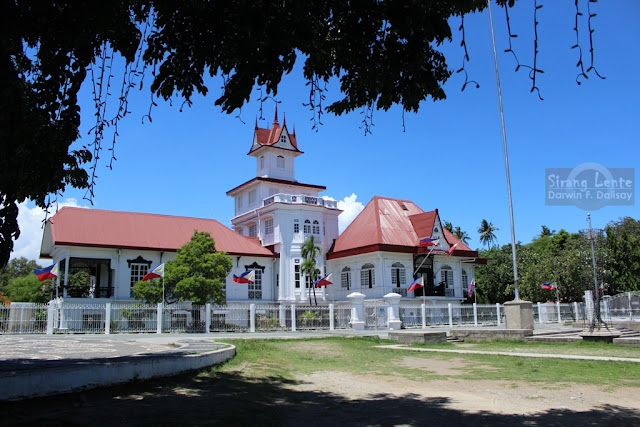
Jump to: About Aguinaldo Shrine | Historical Significance | Inside the Museum | How to Get There | Travel Tips | Nearby Attractions
About the Aguinaldo Shrine
The Aguinaldo Shrine and Museum is a historic landmark located in Kawit, Cavite. It was the ancestral home of General Emilio Aguinaldo, the first President of the Philippines, and the site where the Philippine Declaration of Independence was proclaimed on June 12, 1898.
Saturday, 23 January 2021
Cebu Metropolitan Cathedral
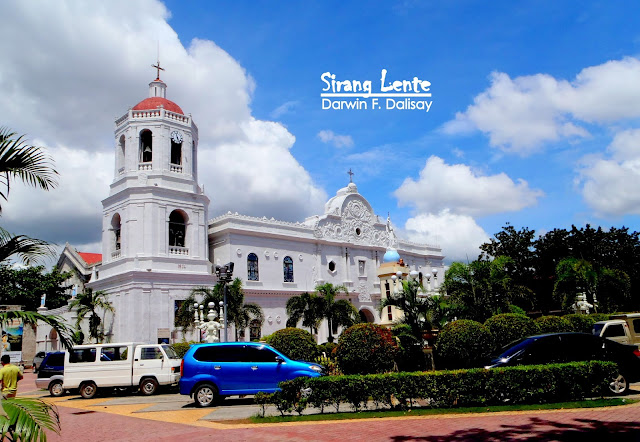
About Cebu Metropolitan Cathedral
The Cebu Metropolitan Cathedral, officially known as the Metropolitan Cathedral of the Holy Angels and of St. Vitales, is one of the oldest and most important churches in Cebu. Located near the Basilica Minore del Santo Niño, it serves as the ecclesiastical seat of the Archdiocese of Cebu.
Heritage of Cebu Monument

Jump to: About the Monument | Historical Background | How to Get There | What to See | Travel Tips | Nearby Attractions
About the Heritage of Cebu Monument
The Heritage of Cebu Monument is a massive sculpture located in the historic Parian district of Cebu City. It showcases key events and figures from Cebu’s history in one stunning visual masterpiece, making it a must-visit landmark for culture and history lovers.
Magellan’s Cross, Cebu

About Magellan’s Cross
Magellan’s Cross is a historical landmark and the most visited tourist spot in Cebu City. It is a Christian Cross made of wood erected by Ferdinand Magellan (a Portuguese explorer) during his exploration in Cebu, Philippines, on April 21, 1521. This Cross can be found inside an octagonal chapel in front of Cebu City Hall and beside Basilica Minore del Santo Niño. This is one of the most prominent tourist spots in Cebu. But, the current Cross is a tindalo wood where the splinters of the original Cross were encased. The wood of the original Cross deteriorated because the people were chipping off some parts and making it into a souvenir in the belief that it was miraculous.
Basilica Minore del Santo Niño, Cebu

About the Basilica Minore del Santo Niño
The Basilica Minore del Santo Niño is the oldest Roman Catholic church in the Philippines, located in Cebu City. It is one of the oldest Roman Catholic churches in the country. Its current structure is situated on the exact spot where the image of Santo Niño was found in 1565 by the Spanish explorers led by Miguel Lopez de Legazpi. The statue is the same as the statue given by Ferdinand Magellan to the wife of Rajah Humabon 44 years later as a gift during their baptism on April 14, 1521, at the exact location of Magellan's Cross today.
Tinalisayan Island Travel Guide – Sandbar, Crystal Waters & Tips

Jump to: About the Island | How to Get There | Things to Do | Travel Tips | Nearby Attractions
About Tinalisayan Island
Tinalisayan Island was our second destination from Alibijaban Island to the Burias Islands. Traveling from Animasola Island to this island takes an hour, but this is irrevocably number one among the three islands we visited. When I jumped off the boat and landed in the shallow, crystal clear water, I easily felt a relaxing feeling because the water was really cool, contrary to the heat and UV rays from the sun. Our boat was parked by the tip of the sandbar, so walking on the long stretch of fine and powdery white sand, with the other visitors in their colorful swimming attire, was just awesome! This long sandbar always greets visitors with breathtaking beauty.
Zamboanga City Travel Guide – Things to Do, Tips & Itinerary

Jump to: Overview | How to Get There | Things to Do | Food to Try | Travel Tips | My Solo Backpacking | Cheap Hotels
Overview of Zamboanga City
"The Latin City of Asia" was given to Zamboanga City because of its language, called "chavacano," similar to Spanish. The city is situated on the Southern side of the Zamboanga Peninsula and the Northern side of Basilan. Aside from their language, the city is also prominent with its "vinta," a colorful and stunning sailboat or watercraft that is usually used by the locals. Using Google Maps, had a walking tour of their top tourist spots and destinations.
The Ruins, Bacolod
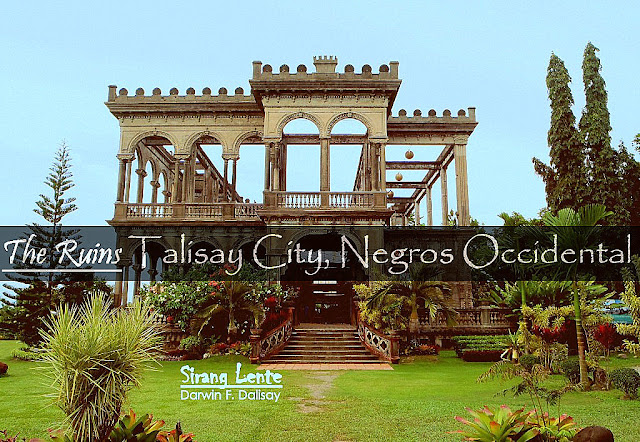
About The Ruins
The Ruins is located in Talisay City, and it was the largest residential mansion built then. This mansion belongs to sugar baron Don Mariano “Anoy” Ledesma Lacson (1865-1948). Built after the death of his wife Maria Braga (1911), and served as the residence of their unmarried children. But, in the early part of World War II, USAFEE and then guerrilla fighters built this mansion to prevent the Japanese forces from making this structure their headquarters. It was burning for three days, leaving no traces of its glorious past, but still, the effort of the workers paid off because its gorgeous ruins are still standing and part of our today.
Mt. Mantalingahan: The Highest and Most Sacred Peak in Palawan

Mt. Mantalingahan measures 2,086 MASL and is located in Rizal, Palawan. It is a mountain that is a bit challenging, but you will be rewarded with amazing views from the summit, cool weather, and a remarkable experience. Others call it Mt. Mantalingajan, or Mt. Mantalingahan Protected Landscape. Traveling to its jump-off is more than 4 hours of land travel from Puerto Princesa City, and it's situated in a secluded municipality. Having said that, its beauty remains hidden from many hikers. Thus, its richness is well preserved.
Molo Church: The Feminist Gothic Church of Iloilo City

The Molo Church is located in Molo District, Iloilo City, and it is commonly known as the St. Anne Parish. This historical church was built in 1831 by the Ilonggo artists with a touch of Gothic-Renaissance architecture. Take note, is the only one outside Manila, so it's proof that the locals are really great in terms of the arts. It is made from coral stones with egg whites mixed with sand for some parts. On August 4, 1886, Dr. Jose Rizal visited Manila from exile in Dapitan to pray, and he saw the gorgeous paintings (today, they no longer exist).
Jaro Cathedral: Iloilo’s Iconic Roman Catholic Landmark

The Jaro Cathedral is located in the Jaro District, Iloilo. It is another example of the country's historical church with baroque architecture. Built in 1864, the cathedral was erected by order of Mariano Cuartero, the first bishop of Jaro. In 1948, this structure was destroyed by an earthquake and was restored in 1956 by the order of the first archbishop, Jose Ma. Cuenco. The famous orator Graciano Lopez Jaena was baptized in this church. In 1976, the National Historical Institute proclaimed this church a Historical Landmark.
Sulu Museum: Discover the Rich Culture and History of Sulu

The Sulu Museum is a two-story building that houses the relics, documents, paintings, and other historical memorabilia of Sulu. Previously, this building housed the Library of Sulu. What's interesting inside are the Chinese wares and documents, such as the 1878 Land Lease Agreement between the Sultanate of Sulu and British North Borneo Chartered Co. The Photo above is some of the works of Abdulmari Asia Imao, a National Artist for Sculpture.
Bangui Windmills

About
The Bangui Windmills is a place that converts wind energy into electrical energy, yet it is one of the top tourist attractions in Ilocos Norte. This wind farm has 20 units of 70-meter-high wind turbines, stretching along the 99-kilometer shoreline of Bangui Bay and facing the West Philippine Sea, and each of the turbines is 326 meters apart. Read my Ilocos Norte Travel Guide to know how to get here and a list of the nearby tourist spots.
Kapurpurawan Rock Formation - a stunning place in Ilocos

The Kapurpurawan Rock Formation is another stunning place in Burgos, Ilocos Norte. It is a limestone formation curved by the pressure of the waves and the acidity of the water; the limestone by the hill was shaped into something artistic. Read my Ilocos Norte Travel Guide to know how to get here and the nearby tourist spots.
Friday, 22 January 2021
Guimbal Church: A Timeless Heritage Landmark in Iloilo

The Guimbal Church is located by the highway of Guimbal, Iloilo, and can easily be recognized because of its unique façade. After I visited Miag-Ao Church, I traveled for around 30 minutes to this church. According to my research, this historical church is also known as the St. Nicholas of Tolentino Church and doesn’t have any record of when it was erected or established. However, it was completed between 1769 and 1774 under Friar Juan Campos. In 1893, it was further enlarged but was later destroyed by fire during the Revolution from 1896 to 1898.
Paco Park, Manila
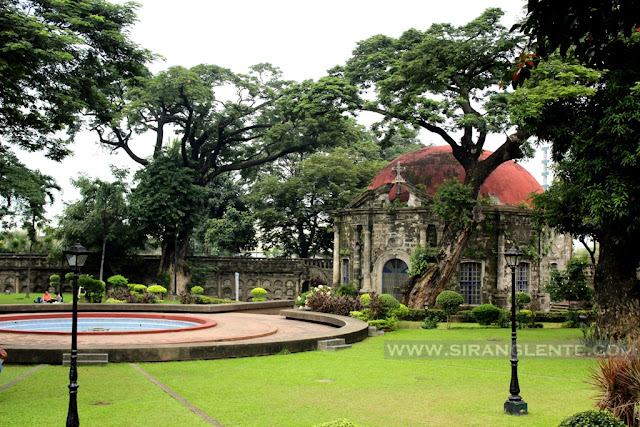
About Paco Park
The Paco Park, originally known as the Cementerio General de Dilao, is a recreational garden area and served as Manila's municipal cemetery during the Spanish colonial period. This structure was built in the 18th century and was completed in 1822. Its original design was to be a municipal cemetery for the influential and aristocratic Spanish families living in Manila and Intramuros, but it also served as a peaceful dwelling place for those victims of the cholera epidemic.
Fort Santiago during World Tourism Day

The Fort Santiago was my first destination as part of Celebrating the World Tourism Day 2017 in Intramuros. Walking beside this gigantic wall is remarkable as it embodies the significance of the past to the present. Just by reading the writings placed by the management in different corners, you can foresee what has transpired inside this wall centuries ago. Also, we can distinguish who the prominent people imprisoned and tortured here, like Jose Rizal. The photos below will give you more excitement.
San Sebastian Church, Manila Travel Guide

The San Sebastian Church or Basilica Minore de San Sebastian is a Minor Basilica in the City of Manila. The very first structure of this church is situated on land donated by Don Bernardino Castillo, a devotee of Saint Sebastian, in 1621. It was made up of wood, but was burned in 1651. So it was then replaced by a structure made of bricks, but it was destroyed again by fire and earthquakes.
Manila Cathedral, Intramuros Travel Guide
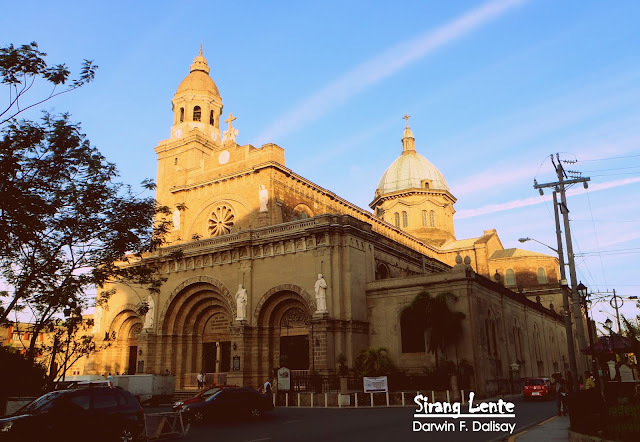
The Manila Cathedral, or the Manila Metropolitan Cathedral-Basilica, is situated in the district of Intramuros, Manila. Originally, this church was the "Church of Manila," which was established and under the management of the Diocese of Mexico in 1571, but later in 1579, it became a separate diocese.
San Agustin Church, Manila
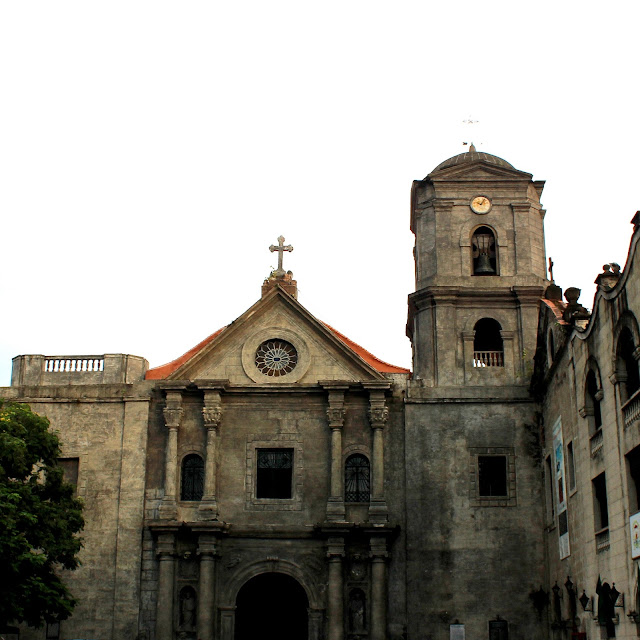
About San Agustin Church
San Agustin Church in Intramuros, Manila, is the oldest stone church in the Philippines and a UNESCO World Heritage Site that showcases remarkable Baroque architecture. Built in 1607, it has withstood wars, earthquakes, and the test of time, making it a living testament to the country’s colonial past and deep Catholic faith. Its intricate facade, grand interiors, and historical significance continue to draw pilgrims, tourists, and history enthusiasts from around the world.
Burgos Lighthouse, Ilocos Travel Guide

The Cape Bojeador Lighthouse is also known as the Burgos Lighthouse, a 66-foot-tall octagonal stone tower on Vigia de Nagpartian Hill with an overlooking scene of the cape. It is one of the historical landmarks and a cultural heritage erected during the Spanish era in the Philippines. This lighthouse was first designed by Magin Pers and Pers in 1887 and finished by the Lighthouse Service under Guillermo Brockman.
Sto. Niño Cold Spring, Camiguin Travel Guide

The Sto. Nino Cold Spring is located in Catarman and is one of Camiguin’s top tourist destinations. By its name, you can easily expect fresh and cold spring water. I had no plans to get wet, especially with the cold temperature of the water, but because of its super-duper clear water, I dipped into the water and experienced how great this cold spring is. I was also stunned by the bottom of the pool, there is no silt because it is made of concrete.
Bura Soda Water Pool, Camiguin Travel Guide
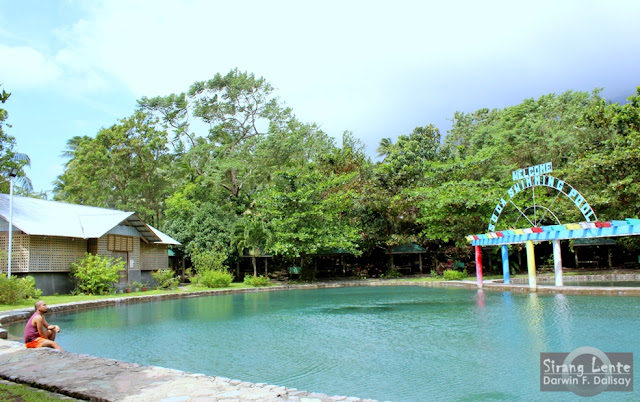
The Bura Soda Water Park is located in Catarman, Camiguin. It has a swimming pool with crystal-clear water with a taste of soda, and that's the reason why they call it that way. According to the caretaker, the water coming out of this spring tastes like a soda, and it is safe to drink. The atmosphere in the area is relaxing because it is surrounded by hardwood trees and flowers. The air is absolutely clean and refreshing. Cottages are available for rent and you can order food from the pool attendant.
Guiob Church Ruins, Camiguin Travel Guide

The old Guiob Church is located in Camiguin. It was damaged by the volcanic eruption that happened centuries ago, damaging the other structures on the island. What's unique about this structure is the meter-wide walls and huge columns that are made of coral stones. Today, it's covered with mosses and plants.
Calle Crisologo, Vigan's Historical Street

The Calle Crisologo is located in Vigan City, Province of Ilocos Sur. It is also called Mena Crisologo Street, named after Mena Pecson Crisologo, who is the most respected son of Ilocos. He wrote Mining wenno Ayat ti Kararwa, which is compared to Jose Rizal's Noli Me Tangere; he is also the author of Don Calixtofaro de la Kota Caballero de la Luna and Codigo Municipal. With these stunning heritage houses, Calle Crisologo is definitely the top tourist attraction in the city.
Ardent Hot Spring, Camiguin
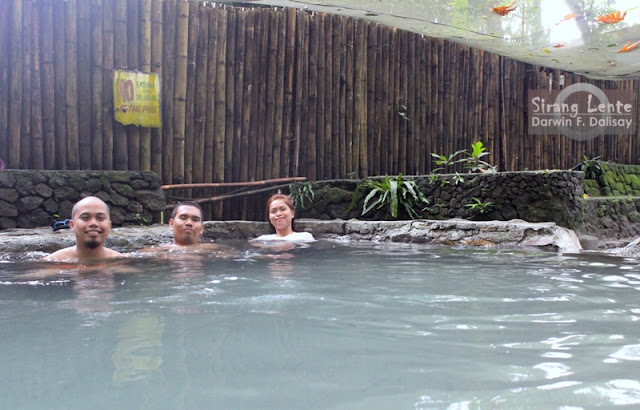
About Ardent Hot Spring
Ardent Hot Spring in Camiguin is one of the island’s most popular attractions, known for its natural warm pools heated by Mt. Hibok-Hibok. With water temperatures averaging around 40°C, it’s a relaxing haven where visitors can unwind after a day of exploring the island’s volcanoes, waterfalls, and beaches.
During our backpacking in Mambajao, it was our last destination. It has a wide land area composed of trees, plants, cottages, and other structures. Tourists usually make this relaxing resort their last destination to soothe their tired muscles, and it is true. I spent an hour here and felt relaxed while my body was submerged in the warm water.


A visit to Ardent Hot Spring is the perfect way to end a day of exploring Camiguin. Surrounded by lush greenery and the soothing sound of flowing water, its naturally heated pools offer a relaxing escape that refreshes both body and mind. More than just a dip, it’s an experience that captures the island’s charm and natural beauty.
As someone who has visited all 82 provinces in the Philippines, I’ve created a complete guide to help you explore each one. Check out my Philippines 82 Provinces Travel Guide here.
How to Get Here
- By Air: The fastest way is to book a flight from Manila to Camiguin Airport (CGM). Philippine Airlines, Cebu Pacific, and AirAsia have their regular flights to CGM. At the airport, charter a habal-habal or jeepney to your destinations.
- If you're connecting province to province: From CDO or Butuan, ride a bus to Balingoan Port, then, ferry to Camiguin.
Related Articles from Sirang Lente:
Thursday, 21 January 2021
Colon Street, Cebu
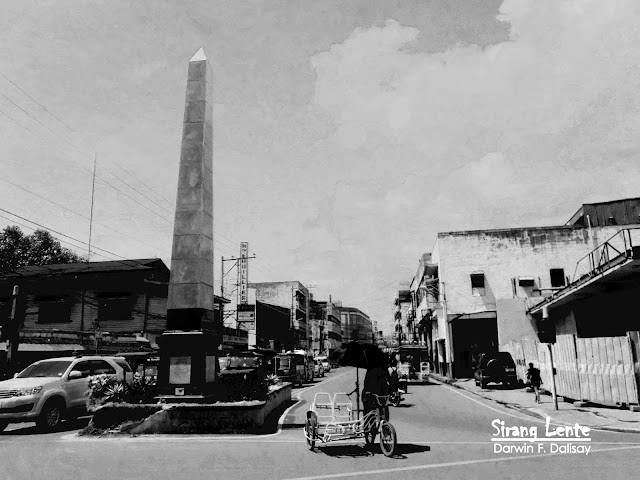
Jump to: About Colon Street | Historical Significance | Nearby Attractions | Suggested Itinerary | Travel Budget | Where to Stay | Travel Tips
About Colon Street
Colon Street, located in downtown Cebu City, is recognized as the oldest street in the Philippines. It was established during the Spanish colonial period and remains a bustling commercial center filled with local vendors, old movie houses, and historical landmarks.
Malamawi Beach, Basilan

About Malamawi
Malamawi Island in Basilan is a hidden tropical paradise known for its long stretch of powdery white sand beach and crystal-clear waters. Just a short boat ride from Isabela City, the island offers a serene escape where visitors can swim, snorkel, and bask in the unspoiled beauty of nature. Its calm and laid-back atmosphere makes it one of the most underrated island getaways in Mindanao.
Featuring La Union (8 Best Tourist Spots)
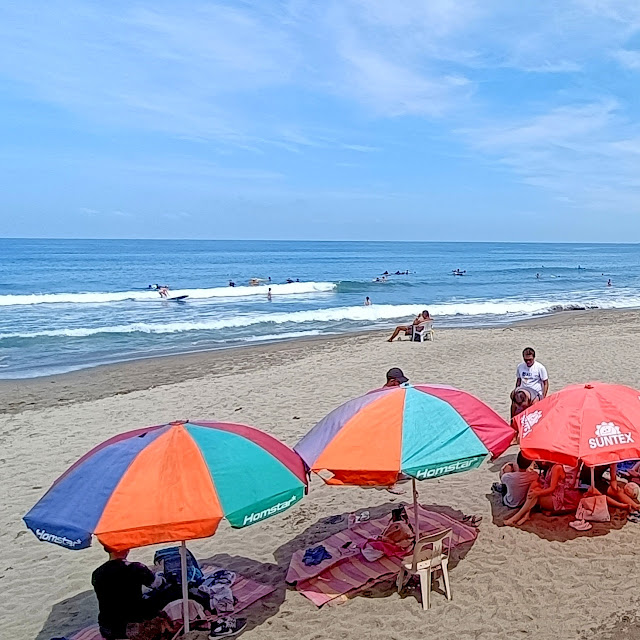
The Province of La Union is the surfing capital of the North. The gigantic yet friendly waves make this place a paradise for surfers, well, let's include those beach addicts. The beach has a long stretch of fine grey sand with a clear view of the golden sunset. The sand has a mixture of shells and colorful corals. For people who are afraid of the waves, like me, having a wide view of the emerald water with surfers dancing on their boards is just amazing.
Taal Basilica
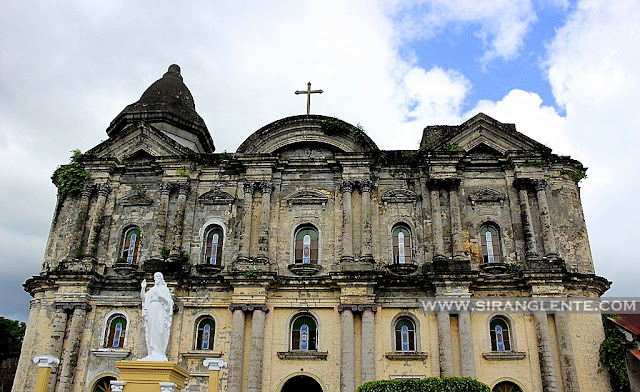
The Taal Basilica is also known as the Minor Basilica and Parish of Saint Martin of Tours and is considered the largest church building in Asia, standing 88.6 meters (291 feet) long and 48 meters (157 feet) wide. I am eager to visit this old church because an earthquake hit the province and it created a crack in its wall.
Wednesday, 20 January 2021
National Museum of Natural History

The National Museum of Natural History, located in Manila, recently opened with a bang! They open their doors, cases, and glass cabinets to everyone, offering extremely rare items that can only be found here with no entrance fee. The museum staff and researchers exerted their effort to preserve and keep these items for the next generation. It is my and your wealth! So, what are you waiting for? Tara na!
Chinese Garden, Luneta, Manila
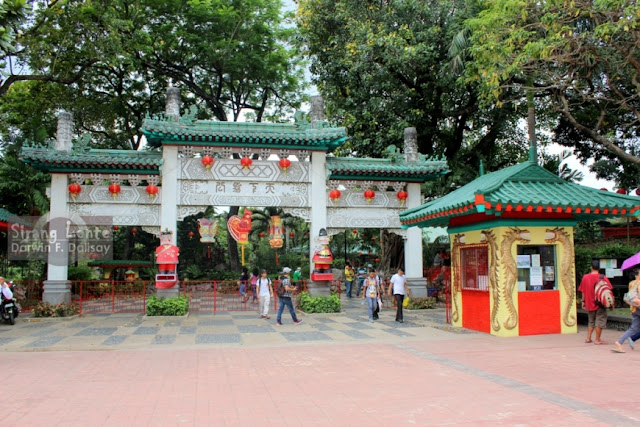
The Chinese Garden is located in Luneta and is one of the tourist spots, attractions, and destinations in Manila. This garden can give you an amazing feeling of what's inside a typical Chinese park and temple. I was searching for the National Museum Planetarium, but Google Maps gave me an idea about this place. When I saw its entrance, I was amazed by the artistic and colorful gate, with Chinese characters.
National Museum Planetarium, Manila

About Planetarium
The National Planetarium in Manila is a fascinating destination for science enthusiasts and curious travelers alike. Located within Rizal Park, it offers engaging exhibits, astronomy shows, and immersive dome projections that bring the wonders of the universe closer to visitors of all ages.
Cattleya Resort, Antipolo

The Cattleya Resort is situated in Antipolo City and is one of the best resort spots in Rizal Province. Its location faces the vibrant lights of Metro Manila, the breeze is cool, the air is fresh, everything is calm, and it has a homey feeling. The area is also surrounded by plants with an artistic landscape, and the pool has a unique shape filled with crystal-clear water. Not only that, the sound of the lashing water on the pool added a relaxing feeling during our stay.
Baluarte de San Diego

About Baluarte de San Diego
The Baluarte de San Diego is a historical site and the oldest stone fort in Manila. Built in 1586, it was called the Nuestra Señora de Guia, designed by Jesuit priest Antonio Sedeno. Fell into disrepair and was renovated in 1593. Incorporated as part of the walls, but was later abandoned due to its unstable foundations. The new structure was constructed with orillons (curved corners) masking cannons on the flanks. Destroyed during the British invasion in 1762. Repaired and renovated in 1764. The American Army ordnance section was built on-site during the American occupation. Destroyed during World War 2, and is now a major tourist attraction of the Intramuros Walled City.
Fort Santiago, Manila

Fort Santiago is one of the historical landmarks inside Intramuros. It's a fortress that is a part of the structures of the Walled City. This historical structure was first built by Miguel Lopez de Legazpi for the newly founded City of Manila. This fort is the most important historical sites in Manila as Dr. Jose Rizal was imprisoned here before he was executed in 1896.

